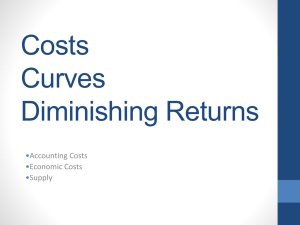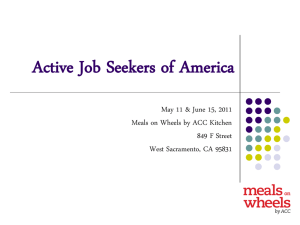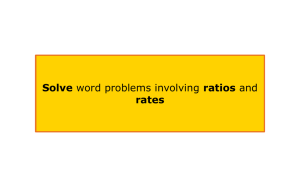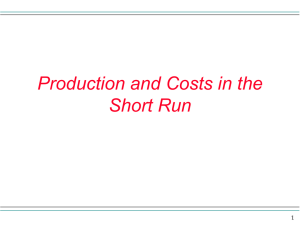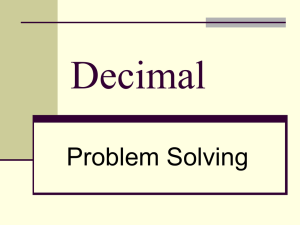marginal cost
advertisement
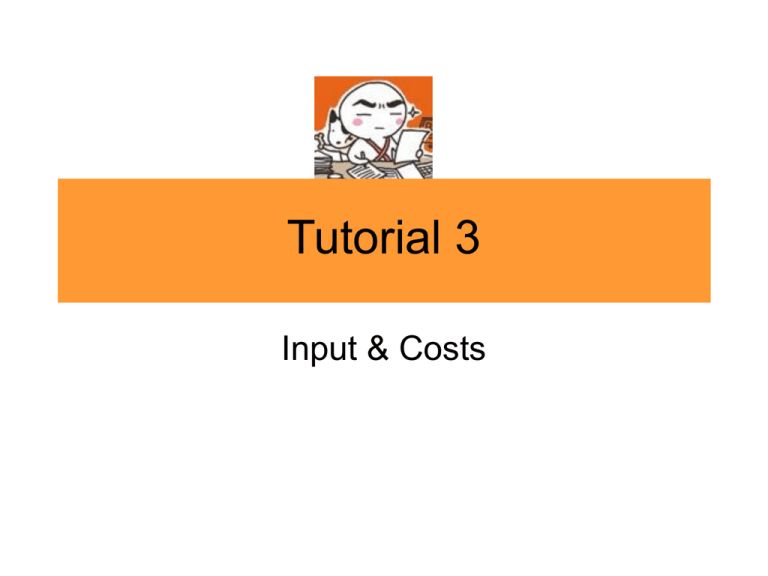
Tutorial 3 Input & Costs 1. Total & Marginal Product a. What are the fixed inputs and variable inputs in the production of cups of frozen yogurt? b. Draw the total product curve. Put the quantity of labor on the horizontal axis and the quantity on the vertical axis. What is the marginal product of each worker? Why does the marginal product decline as the number of workers increases? c. Solution 1 a. The fixed inputs are those whose quantities do not change as the quantity of output changes: frozen-yogurt machines, refrigerators, and the shop. The variable inputs are those whose quantities do change as the quantity of output changes: frozen-yogurt mix, cups, sprinkle toppings, and workers. Solution 1 Solution 1 c. The marginal product, MPL, of the first worker is 110 cups. The MPL of the second worker is 90 cups. The MPL of the third worker is 70 cups and so on. The MPL of labor declines as more and more workers are added due to the principle of diminishing returns. Since the number of frozen-yogurt machines is fixed, as workers are added there are fewer and fewer machines for each worker to work with, making each additional worker less and less productive. 2. Total & Marginal Cost From the production function, Marty pays each of his workers $80 per day. The cost of his other variable inputs is $.50 per cup of yogurt. His fixed cost id $100 per day. • What is Marty’s variable cost and total cost when he produces 110 cups of yogurt? 200 cups? Calculate variable and total cost for every level of output. • • Draw Marty’s variable cost curve. On the same diagram draw his total cost curve. What is the marginal cost per cup for the first 110 cups of yogurt? For the next 90 cups? Calculate the marginal cost for all remaining levels of output. Solution 2 • a. Marty’s variable cost, VC, is his wage cost ($80 per worker per day) and his other input costs ($0.50 per cup). His total cost, TC, is the sum of the variable cost and his fixed cost of $100 per day. The answers are given in the accompanying table. Solution 2 Solution 2 • Marginal cost, MC, per cup of frozen yogurt is shown in the table in part a; it is the change in total cost divided by the change in quantity of output. 3. Average Costs • a. b. c. d. The production function is given in problem 1. The cost are given in problem 2. For each of the given levels of output, calculate average fixed cost (AFC), average variable cost (AVC) and average total cost (ATC) per cup of frozen yogurt. Draw the AFC, AVC, and ATC curves. What principle explains why the AFC declines why the AVC increases as output increases? Explain your answer. How many cups of frozen yogurt are produced when average total cost is minimized? Solution 3 Solution 3 Solution 3 c. AFC declines as output increases due to the spreading effect. The fixed cost is spread over more and more units of output as output increases. AVC increases as output increases due to the diminishing returns effect. Due to diminishing returns to labor, it costs more to produce each additional unit of output. Solution 3 d. Average total cost is minimized when 270 cups of yogurt are produced. At lower quantities of output, the fall attributable to the spreading effect dominates changes in average total cost. At higher quantities of output, the rise attributable to the diminishing returns effect dominates changes in average total cost.

